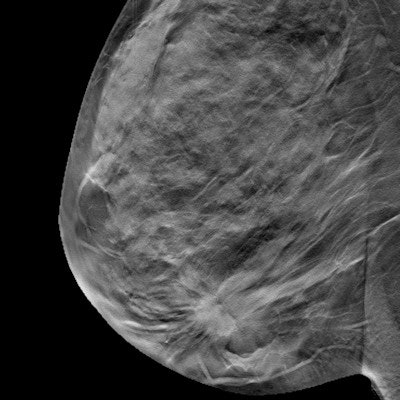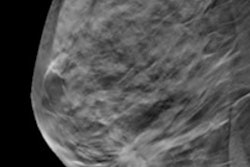
Synthesized 2D mammography delivered promising results in the largest study to date comparing images reconstructed from digital breast tomosynthesis (DBT) scans with traditional digital mammograms. Researchers published their findings on October 13 in Radiology.
Researchers have proposed synthesized 2D mammography as a way to prevent excess radiation exposure during breast screening, since many breast imagers perform DBT scans in conjunction with digital mammography, doubling the amount of radiation exposure for patients. But some clinicians have expressed concerns over the quality of 2D synthesized images, noting difficulties with calcification detection and characterization.
The new study puts some of those concerns to rest. In a review of nearly 150,000 mammograms, synthesized 2D images with DBT performed as well as digital mammography with DBT for most metrics. In the few places where synthesized 2D did fall short, the modality still performed within acceptable guidelines.
The show demonstrates that synthesized mammography may be a feasible way to reduce radiation dose exposure for women undergoing breast screening. Based on the findings, Swedish breast imaging expert Dr. Kristina Lång, PhD, felt confident recommending synthesized images over digital mammography for clinicians who use DBT.
"If DBT will ultimately be recommended as a new screening modality, the use of [synthesized mammography] in combination with DBT should be the protocol of choice," wrote Lång, a senior consultant in breast imaging at Skåne University Hospital in Malmö, in a commentary also published in Radiology on October 13.
The large, retrospective study was conducted by a joint team of researchers from the University of Pennsylvania (Penn) and the University of Vermont. Lead author Dr. Samantha Zuckerman, an assistant professor of clinical radiology at Penn, and colleagues compared outcomes for 151,363 women who underwent screening mammography at their respective institutions.
The study cohort included 82,254 women who underwent digital mammography and DBT and 66,109 women who underwent synthesized 2D mammography and DBT. This represented not only the largest study to date comparing synthesized and digital mammography in conjunction with DBT but also the largest study sample for synthesized mammography and DBT, noted the authors and Lång.
Notably, results from women screened with synthesized images and DBT fell within acceptable clinical guidelines. The authors found a recall rate of 7%, sensitivity of 88.3%, and specificity of 93.5% Furthermore, the combined modalities yielded a cancer detection rate of 5.6 and false-negative rate of 0.7 per 1,000 women screened.
In addition, synthesized 2D performed comparably to digital mammography for most outcomes. The researchers found no significant differences between the two techniques for sensitivity, positive predictive value, biopsy rates, or detection of invasive and in situ cancers.
However, after the authors adjusted for population characteristics, they found synthesized 2D with DBT had a significantly lower recall rate and, as a result, specificity than digital mammography with DBT. This amounted to women screened with synthesized 2D having a 6% higher likelihood of being recalled for diagnostic imaging.
The study's recall rate still fell within acceptable guidelines and was not significantly different in the unadjusted analysis. The authors hope future studies evaluate what types of lesions prompt a potential increase in recalls associated with synthesized screening. They also noted larger studies are needed to confirm that synthesized 2D mammography with DBT doesn't result in higher false negative rates due to quality issues.



















